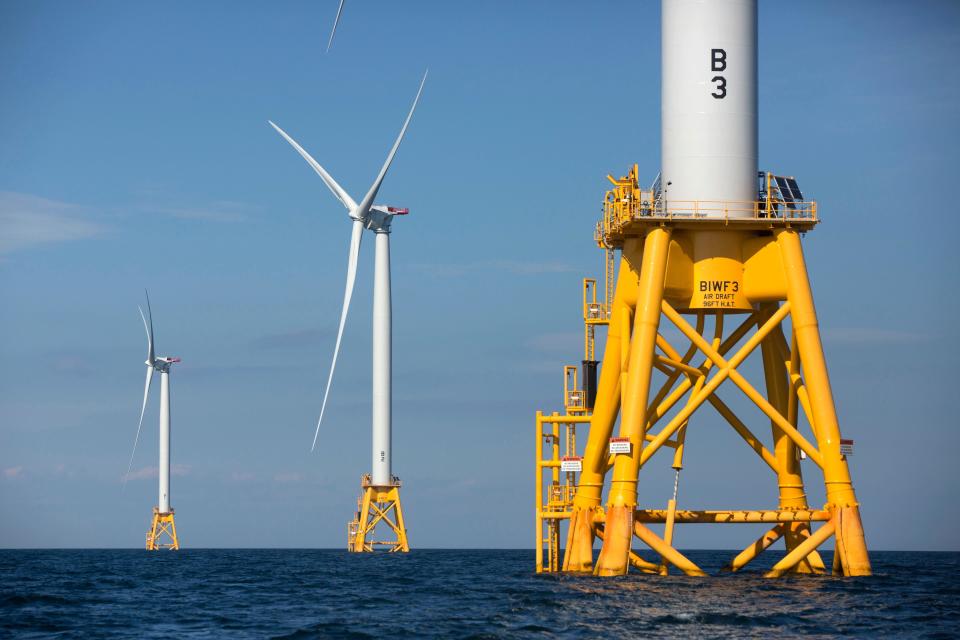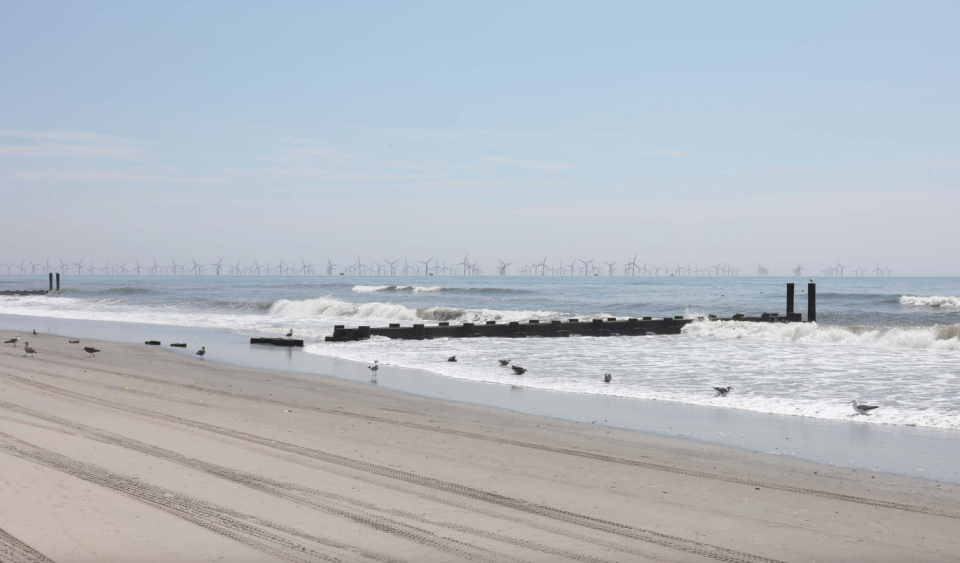Offshore wind proponents, critics square off at Atlantic Shores hearing
Both proponents and critics of New Jersey offshore wind power generation faced off on Monday during a hearing for a project, that if approved, would construct up to 200 wind turbines less than 9 miles off the Jersey Shore.
Atlantic Shores Offshore Wind, a project by the power companies Shell and EDF Renewables North America, promises to power about 700,000 homes in New Jersey through the construction of up to 200 ocean wind turbines.
Supporters and opponents of the project made impassioned statements Monday afternoon to the federal Bureau of Ocean Energy Management, or BOEM, which has released the project's draft environmental impact statement for public review. The agency has leased 183,353 acres of ocean to Atlantic Shores for the project, which is going through the approval process.
Supporters of the project say Atlantic Shores and other offshore wind projects are needed to quickly reduce greenhouse gas emissions, which are contributing to ocean warming, acidification, coastal flooding and stronger storms.

But opponents of the project say it amounts to industrialization of the Atlantic Ocean and will irreparably harm a delicate coastal ecosystem. They argue Atlantic Shores will eliminate crucial scallop and oyster beds to commercial fishing and ruin the ocean view on which local tourism depends.
On Monday, people on both sides of the debate made statements to BOEM about the project during hours of testimony held virtually.
"I think the real dangerous situation will occur if we and others do nothing to do our part to help solve the climate crisis," said Betsy Longendorfer of Northvale, Bergen County. "We know what the environmental impact of that is going to be."
James Thompson, campaign director of the New Jersey League of Conservation Voters, also spoke in support of the project, saying it would help reduce carbon emissions that contribute to warmer ocean temperatures and warmer summers.
"Climate change is not waiting for us to make a decision. It's happening now." he said.
But Kari Martin, advocacy campaign manager of the environmental organization Clean Ocean Action, requested BOEM give the public more time to read over Atlantic Shore's environmental impact statement documents, which amount to some 6,000 pages of reading.
The Atlantic Shores project lies within migration and feeding routes for a variety of marine animals, including humpback whales, fin whales, sperm whales, dolphins, and the population of endangered North Atlantic right whales, of which just about 300 individuals remain.
The area is also along the migration routes of varieties of shorebirds, some of them threatened species, like the red knot and the piping plover.
"We need to see more evidence that these are sustainable and safe energy sources," said Kristen O'Rourke, director of Quality of Life for the Point Pleasant Beach municipal government.
O'Rourke also questioned whether reliance on offshore wind would make New Jersey more vulnerable to attacks on the power grid.
"These wind generation projects will be off the shore and available to anyone who chooses to come in and threaten the power grid that we will come to depend entirely upon by 2040," she said.
Mayor John A. Peterson Jr. of Seaside Park said the impact goes farther than Atlantic Shores' lease area, but to the multiple offshore wind projects planned along the coasts of the mid-Atlantic and New England states.

The area is used for "bird migration, numerous migratory mammals, the North Atlantic right whale in particular," he said. If BOEM proceeds with the offshore wind projects, the agency is "virtually damning the North Atlantic right whale to extinction," he added.
Anjuli Ramos, New Jersey director of the Sierra Club, said responsibly designed offshore wind technology is important for protecting ecosystems from climate change.
"The future of our communities and our environment, particularly the ocean, depends on us shifting away from burning carbon," she said. "However, we must ensure that the build out of this transition is done utilizing the best available technology, the latest science and data… and with the protection of ecosystems at the forefront of all planning and work."
BOEM will hold another virtual hearing for comments on the environmental impacts of the project at 5 p.m. Wednesday. Comments should be submitted to BOEM by 11:59 p.m. on July 3.
Amanda Oglesby is an Ocean County native who covers Brick, Barnegat and Lacey townships as well as the environment. She has worked for the Press for more than a decade. Reach her at @OglesbyAPP, aoglesby@gannettnj.com or 732-557-5701.
This article originally appeared on Asbury Park Press: Atlantic Shores Offshore Wind releases environmental impact statement

